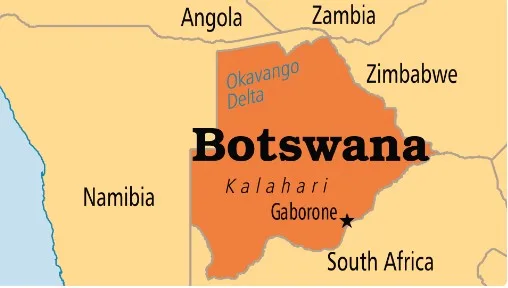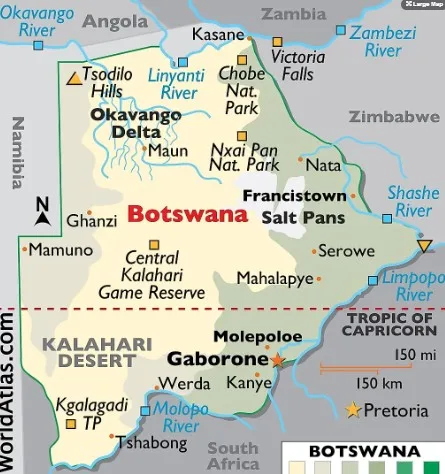Balfour Declaration
Syllabus: GS1/World History
Context
- The Balfour Declaration was made 107 years ago on November 2, 1917.
The Balfour Declaration
- It was a letter that Balfour, then British foreign secretary, wrote to Lionel Walter Rothschild, 2nd Baron Rothschild of Tring, a prominent member of the Anglo-Jewish community.
- It expressed support for the establishment of a national home for the Jewish people in Palestine.
- The declaration is seen as a significant moment in the lead-up to the 1948 creation of Israel.
Factors Leading to Balfour Declaration
- Zionist Movement: The Zionists believed that the Jewish community, facing increasing persecution in Europe, would not be safe till they had a country, a homeland, to call their own.
- Thus, Zionists began approaching various leaders to secure support for this goal.
- Strategic Interest of the Allies: It reflected British strategic interests during World War I, including garnering support from Jews in the United States and Russia.
- The implications of the Balfour Declaration contributed to tensions in the region and played a crucial role in the subsequent history of Israel and Palestine.
Source: IE
Ningol Chakkouba
Syllabus: GS 1/Culture
Context
- Ningol Chakkouba, one of Manipur’s most significant festivals, was celebrated with great enthusiasm.
About
- The festival is traditionally held on the second lunar day of the Manipuri calendar’s Hiyangei month and its history dates back to the time when King Nongda Lairen Pakhangba ruled in Manipur.
- Ningol means ‘married woman’ and Chakouba means ‘invitation for feast’; so the festival is the one where the married women are invited to their parents’ home for a feast.
- The invitation comes from the son(s) of the parental family of the ningols, generally a week in advance; it strengthens the bond of affections among the brothers and sisters, daughters and parents of a family.
- Earlier, the festival was mainly celebrated by the Meiteis but nowadays many other communities also have started to celebrate it.
Source: AIR
Digital India Common Service Centre (DICSC) Project
Syllabus: GS2/Governance
In News
- The Ministry of Electronics and Information Technology (MeitY) has announced the launch of the Digital India Common Service Centre (DICSC) project.
About
- Project aims to bridge the digital divide in rural India by providing citizens with accessible e-governance, financial, and commercial services.
- Each centre will serve as a one-stop solution for essential services, including Aadhaar registration, banking, and tele-law, equipped with high-speed broadband connectivity and modern infrastructure.
- The implementation is managed by Common Services Centres e-Governance Services India Limited.
Source: FE
India’s Progress in the Fight Against Tuberculosis
Syllabus: GS2/Health
Context
- Prime Minister Shri Narendra Modi highlighted the nation’s achievements in reducing TB incidence.
About
- The World Health Organization (WHO) has recognised India’s progress, with a 17.7% decline in TB incidence from 2015 to 2023, a rate more than double the global decline of 8.3%.
- The government has expanded and strengthened the National TB Elimination Programme by taking key initiatives such as:
- The Ni-Kshay Poshan Yojana to provide essential nutritional support to TB patients and the introduction of the BPALM regimen, a novel treatment for multidrug-resistant tuberculosis.
- India’s goal is to eliminate tuberculosis (TB) by 2025, five years ahead of the global target of 2030.
Source: PIB
Iron Beam
Syllabus: GS3/ Defence
In News
- Israel’s Ministry of Defense has announced that the “Iron Beam,” a high-powered laser interception system, is expected to become operational within a year.
About
- Purpose: Designed to neutralize projectiles, including drones and rockets, using high-powered lasers.
- Functionality: The Iron Beam can intercept a range of threats from hundreds of meters to several kilometers away, engaging at the speed of light. It operates with minimal cost per interception and low collateral damage.
- Development: Created by Rafael Advanced Defense Systems, it will complement Israel’s existing Iron Dome system and will be integrated into a broader, multilayer defense strategy.
- Capabilities and Limitations: The Iron Beam is especially effective against small, fast-moving drones, although its efficiency decreases in poor weather conditions like fog or rain.
Source: TOI
Laika: First Living Creature to Orbit the Earth
Syllabus: GS 3/Space
Context
- November 3 marks 67 years since the Soviet Union sent Laika to orbit the Earth on its Sputnik 2 mission.
About: Laika
- Laika (Barker) was a Soviet space dog who became the first living creature to orbit the earth.
- The dog was promoted to cosmonaut (a term referring to an astronaut in the Soviet or Russian space program) based on her ‘small’ size and ‘calm’ demeanour.
- As the technology to re-enter the atmosphere had not yet been developed, Laika’s survival was never expected. It is likely that she died of hyperthermia a few hours after reaching orbit.
- Laika ended up providing scientists with the first data on the behaviour of a living organism orbiting in the space environment. Four years later, Yuri Gagarin became the first human to orbit earth.
| Sputnik 2 mission – Sputnik 2 was launched on a Sapwood SS-6 8K71PS launch vehicle on November 3, 1957. – It was the second spacecraft launched into Earth orbit and was the first such biological spacecraft. Sputnik 2 remained in orbit for five months. |
Source: IE
Botswana
Syllabus: GS1/Places in news
In News
- Mr. Duma Boko elected as the new President of Botswana.
About Botswana
- It is a land-locked country dominated in geographical terms by the Kalahari Desert.
- It is situated in the Southern African region and about two-thirds of Botswana lies within the Tropics; it is bisected by the Tropic of Capricorn.
- It is bordered by Zambia and Zimbabwe to the northeast, Namibia to the north and west, and South Africa to the south and southeast.

- Capital City: Gaborone
- Botswana’s climate is semi-arid though it is hot and dry for much of the year.
- Botswana’s highest point is Tsodilo Hills
- Major Rivers : Significant rivers include the Limpopo, Okavango, and Shashe with the Molopo River creating a geographical border between South Africa and Botswana.

- It is home of the world’s largest elephant population
Source : PIB
Bibek Debroy
Syllabus: GS3/ Miscellaneous
Context
- Economist and chairman of Prime Minister’’s economic advisory council Bibek Debroy has passed away.
About
- He was a full-time Member of NITI Aayog from its constitution in 2015 until June 2019.
- He was also a Sanskrit scholar who had translated the Bhagavad Gita, the Vedas, the Ramayana and the Mahabharata into English.
- Bibek Debroy Committee: Chaired by Debroy from 2014 to 2015, this committee was tasked with restructuring the Railway Ministry and Railway Board, and mobilizing resources for major railway projects.
- He was the Chairman of the Finance Ministry’s ‘Expert Committee for Infrastructure Classification and Financing Framework for Amrit Kaal.
- Debroy was awarded a Padma Shri in 2015 and the Lifetime Achievement Award by the US-India Business Summit in 2016.
Source: IE
Next article
Namo Drone Didi Scheme